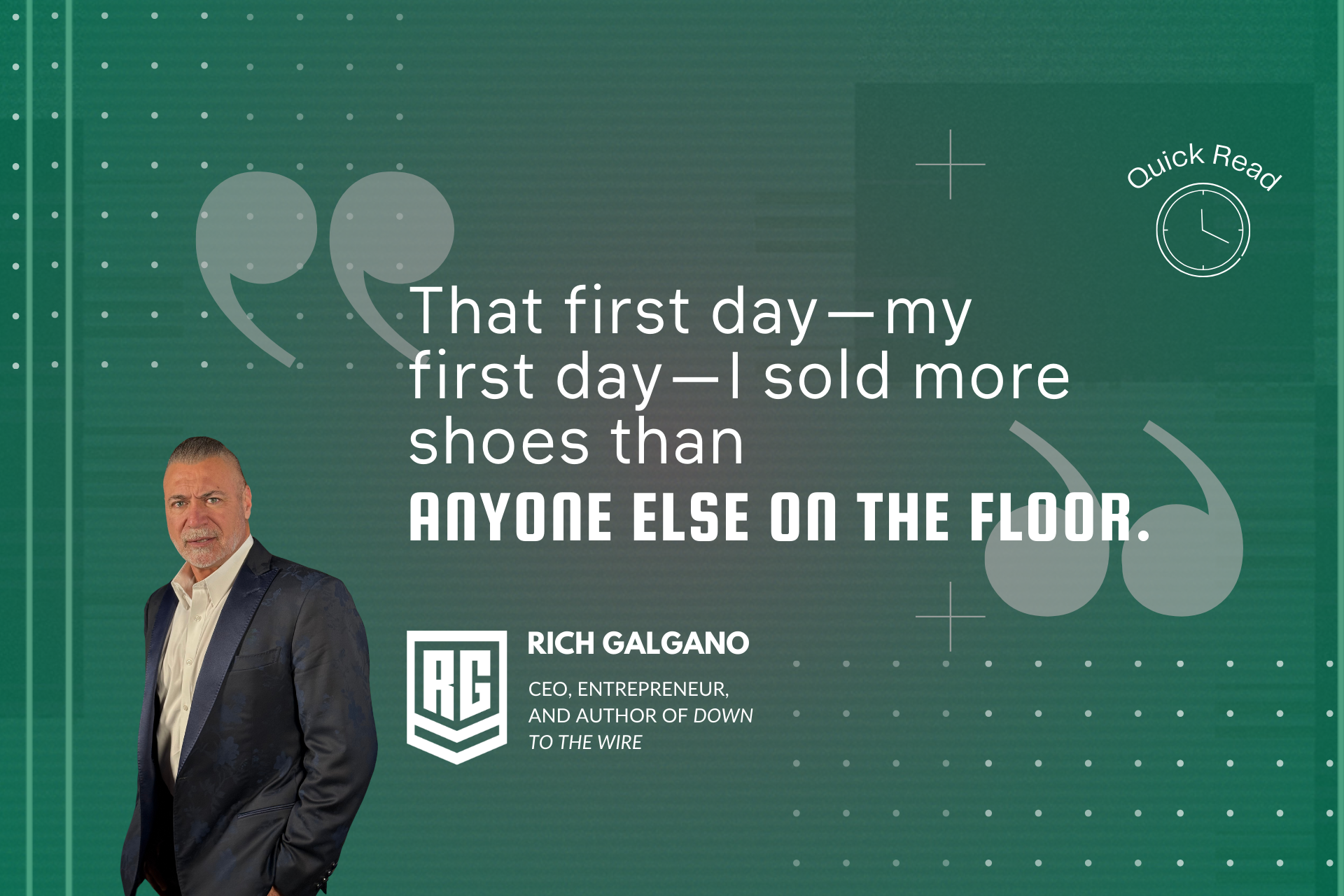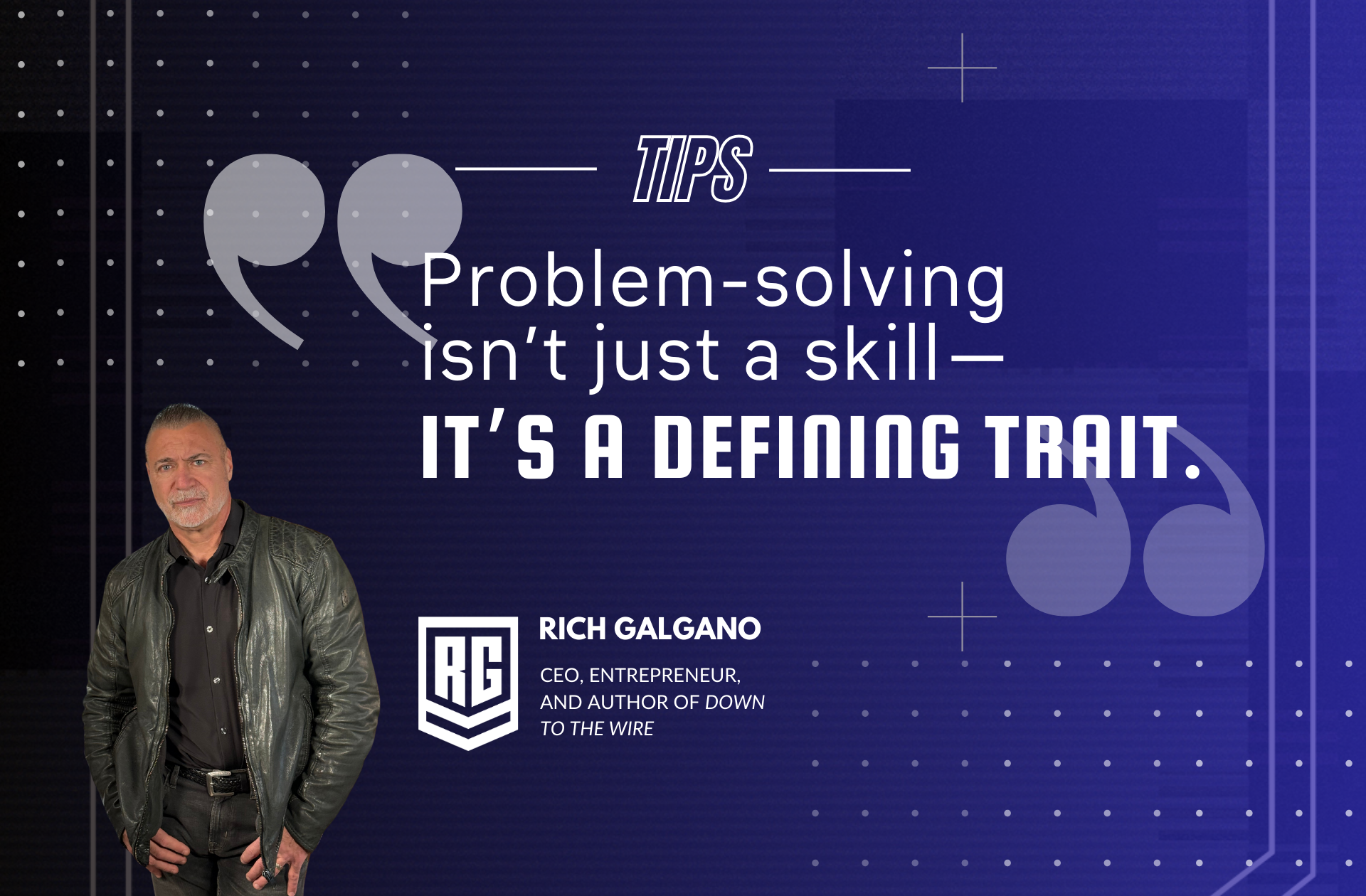"In Order to Read the Room, You Must Be in the Room."
By Rich Galgano
We’ve all heard the saying, “If you never ask for a dance, you’ll never dance.” The same idea applies to being in the room. You can’t read it, you can’t influence it, and you certainly can’t own it if you’re not even there. To be in the room, you have to put yourself out there. You have to seek the invitation, show up, and be ready to make your mark. It’s about taking that first step with confidence, even when the odds might seem against you.
Getting in the Room: The Fearless First Step
The truth is, no one’s going to invite you into the room unless you make yourself known. You have to ask, apply, pitch, or introduce yourself. You have to take the risk of rejection because the reward—the opportunity to be part of the conversation—is worth it.
Think about it: How many times have you hesitated to raise your hand, to make the call, or to approach someone because you were afraid of being told no? But here’s the thing: no one can say yes unless you put yourself out there. Fearlessness doesn’t mean you’re not scared. It means you take action anyway.
The Invitation Is Only the Beginning
Getting into the room is the first step, but it’s not the finish line. The moment you’re invited into the room, the real work begins. You have to show up prepared, ready to bring your best. Opportunities are everywhere, but they favor the bold—and the prepared.
Here’s what it takes to make the most of your invitation:
1. Be Prepared: Whether it’s a pitch meeting, an audition, or a networking event, preparation is key. Know who’s in the room, understand what they care about, and be ready to add value.
2. Bring Confidence: You’ve been invited for a reason. Trust in your abilities and remember that you belong there.
3. Be Memorable: People remember how you make them feel. Bring energy, authenticity, and a willingness to connect.
4. Be Adaptable: The best opportunities often come from unexpected places. Be open to listening, learning, and pivoting when needed.
Be Ready to Be Great
The biggest mistake you can make is to get into the room and not be ready to shine. Being prepared isn’t just about knowing your material—it’s about knowing yourself. When you’re confident in your abilities and clear on your goals, you can walk into any room with purpose and presence.
Preparation also means understanding what greatness looks like in the context of that room. It’s not always about being the loudest or the smartest—it’s about being the most impactful. It’s about listening, adapting, and finding the right way to contribute.
Why It Matters
Every opportunity starts with a choice: to step up or to stay back. If you choose to stay back, you’re guaranteeing that nothing will happen. But if you step up, you open the door to possibility. Getting into the room means you’re giving yourself a chance—a chance to learn, to grow, to connect, and to succeed.
Think of the people you admire most. They didn’t get to where they are by sitting on the sidelines. They took risks, faced rejection, and put themselves in the position to succeed. They didn’t wait for life to hand them opportunities—they went out and found them.
The Bottom Line
“In order to read the room, you must be in the room” isn’t just about showing up—it’s about daring to get there in the first place. It’s about putting yourself out there, seeking the invitation, and saying yes to opportunity when it knocks. And when you do get in the room, it’s about being ready to bring your best and make your mark.
So, don’t wait for someone to hand you the spotlight. Ask for the dance. Make the call. Take the step. Because if you’re not in the room, you can’t read it, and you certainly can’t own it. Success starts with showing up—and showing up starts with you asking for someone to open the door.











